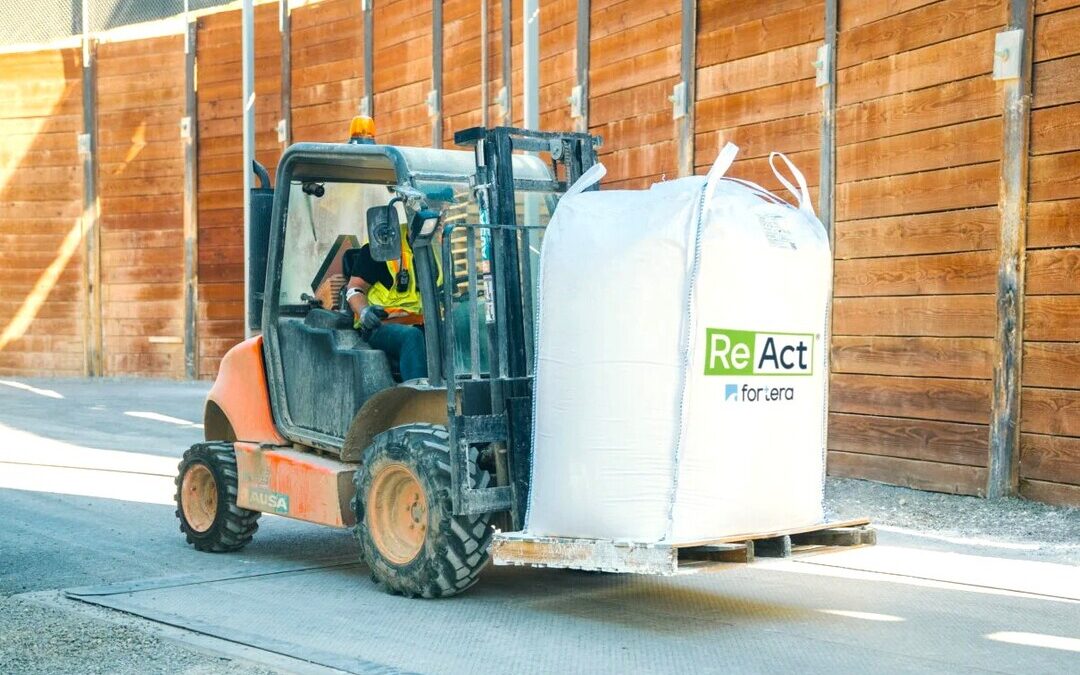US’ Fortera Wins Microsoft Backing to Expand Green Cement Production
Fortera secures Microsoft funding to expand green cement production and accelerate sustainable growth in the global construction industry.
Fortera has secured funding from Microsoft to scale its green cement technology, as the California-based startup prepares for new plants and fresh financing to meet rising demand for low-emission building materials.
The investment, made through Microsoft’s Climate Innovation Fund, grants the software company the right to procure Fortera’s ReAct green cement and environmental certificates. The deal also supports Microsoft’s push to reduce Scope 3 emissions across its global operations.
“We are making long-term investments that will help us achieve our 2030 carbon negative goals,” said Brandon Middaugh, general manager of Microsoft’s Climate Innovation Fund. He added that corporate investment can accelerate the adoption of climate-friendly products such as green cement by creating early demand signals.
The funding will support Fortera’s plan to build a 400,000-ton-per-year commercial facility, its first large-scale production site.
Fortera’s Technology Targets Industry Emissions
Founded in 2019, Fortera developed ReCarb, a process that cuts carbon dioxide emissions by about 70 percent compared with ordinary Portland cement. The technology can integrate into existing cement plants, which reduces deployment costs and speeds up expansion.
“Our approach ensures cost parity with traditional cement while delivering deep emission reductions,” said Fortera CEO Ryan Gilliam in a statement. “Microsoft’s investment validates the impact our commercial-scale plant can have on the green cement market.”
The company already operates a 15,000-ton-per-year plant in Redding, California. That facility captures roughly 6,600 tons of CO2 annually, and its cement has been used in commercial projects, showing readiness for broader market adoption.
Financing Strategy for Global Expansion
In parallel with Microsoft’s support, Fortera plans to raise at least $150 million in a series D funding round later this year.
Proceeds will fund corporate growth, while the company also seeks about $500 million in project-level financing to build five new plants over the next five years.
Each plant is expected to cost $200 million to $250 million and produce up to 400,000 tons of green cement annually. According to Gilliam, each site could generate roughly $80 million in revenue, with costs falling as production scales.
Fortera is considering joint ventures, licensing deals with royalties, and additional partnerships to accelerate expansion. Earlier this month, it announced a strategic alliance with global limestone producer Graymont to deploy its technology worldwide.
Building a Pipeline of Investors and Partners
Fortera has raised over $150 million to date, including an $85 million series C round completed this year. Investors include Khosla Ventures, Temasek Holdings, Saint-Gobain NOVA and Alumni Ventures. The debt-free company employs around 85 people.
Gilliam said Fortera will first target markets in the US, Canada, and Australia, where regulatory clarity and incentives are strongest. He added that an IPO or sale could be considered within two years.
Cement Industry Faces Climate Pressure
Concrete remains the world’s second-most consumed substance after water, making cement a critical target for decarbonization. Global players such as Holcim, Cemex, and Heidelberg Materials, along with startups like Sublime Systems and Terra CO2 Technology, are racing to deliver cleaner alternatives.
By aligning with Microsoft and pursuing aggressive expansion, Fortera aims to position itself as a leader in green cement as construction industries worldwide face pressure to cut emissions.
Also Read:
Amazon, Brimstone Expand Lower-Carbon Cement Testing After Early Success
Nirmal Menon
Related posts

Subscribe
Error: Contact form not found.


